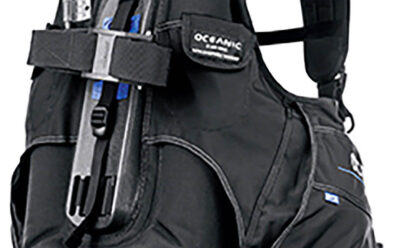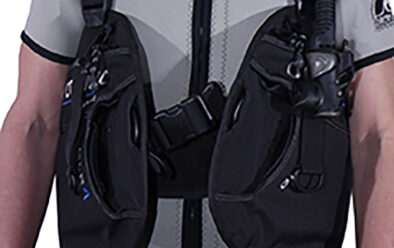#scuba Oceanic OceanPro – Divernet
[ad_1] Oceanic has its roots in 1960s California, founded by Bob Hollis and starting out as a maker of underwater camera-housings, strobes and accessories. In the ’70s Oceanic bought out Farallon, a small but highly inventive diving equipment company. During the ’80s, Oceanic grew to become a leading full-line scuba equipment manufacturer, pushing forward the
[ad_1]
Oceanic has its roots in 1960s California, founded by Bob Hollis and starting out as a maker of underwater camera-housings, strobes and accessories. In the ’70s Oceanic bought out Farallon, a small but highly inventive diving equipment company. During the ’80s, Oceanic grew to become a leading full-line scuba equipment manufacturer, pushing forward the design of computers in particular.
After a UK industry shake-up, Oceanic is now represented, along with technical equipment brand Hollis (also set up by Bob Hollis), Bare, Atomic and Zeagle, by Diving Distribution.
The Design
The Oceanic OceanPro is a jacket-style BC, so it has an air-cell that runs either side of the tank to provide underwater buoyancy and stability – like a wing, but with the air-cell also wrapping around your sides.
 For divers correctly weighted and trimmed, these lobes provide surface flotation to keep them upright, rather than pitched onto their face, and provide space for cargo-pockets.
For divers correctly weighted and trimmed, these lobes provide surface flotation to keep them upright, rather than pitched onto their face, and provide space for cargo-pockets.
Equipped with shoulder-straps, it’s the BC type most often chosen by recreational divers using a single cylinder. It’s heavy-duty and weight-integrated.
Oceanic markets the OceanPro as a low-cost BC, but even budget life-support scuba gear tends to be comprehensively specified, and the OceanPro offers a good selection of features and benefits.
As well as targeting the needs of casual or budget-conscious leisure divers, it’s also aimed at dive-centres as a rental unit. This is a war zone for kit in which only the rugged survive.
A single-bladder BC, the bag is made from 1000-denier nylon, which can be expected to be long-lasting even with hard commercial use.
The shoulder-strap buckles are the usual side-release type, with plastic pull-down D-rings for adjustment. There’s a sternum strap, with another side-release buckle. A final side-release buckle, adjustable so that it can sit centrally or to either side, makes up the waist-strap, which overlies a Velcro-fastened cummerbund.
 Both waist-strap and cummerbund have some adjustment for length where they thread through the back-pack. This means that you don’t have lots of spare waist-strap webbing drifting in front of you, and won’t struggle to fasten the cummerbund snugly if you’re thin.
Both waist-strap and cummerbund have some adjustment for length where they thread through the back-pack. This means that you don’t have lots of spare waist-strap webbing drifting in front of you, and won’t struggle to fasten the cummerbund snugly if you’re thin.
Sadly, I had no need to tighten these.
The backpack is rigid, with a height-adjustment loop and a single camband.
A carry-handle is built into the top of the pack, but this is narrow and I could slip only three fingers through comfortably. The backpack is lightly padded.
For carrying accessories there is one large D-ring on the right shoulder and a small one on each lobe, ideal for clipping off octopuses and gauges. All the D-rings are plastic.
Two large pockets are accessed by zippers, and one has another small D-ring inside.
Inflation is push-button from your tank or by mouth. A rapid-exhaust dump-valve is built into the inflation-hose elbow, activated as usual by pulling down on the mouthpiece. A shoulder-dump sits on the left shoulder, with a bum-dump on the lower left.
The OceanPro would normally have weight-pouches slotted inside it, just behind the cargo-pockets, though these were not supplied for the test. They’re released simply by pulling outwards on a handle.
Near-identical systems are used by many manufacturers. I prefer them because they’re so easy for the user to emergency-jettison, and because another diver coming to the user’s assistance is unlikely to be confused by their operation. However, many other manufacturers argue that side-release clips are better because they’re virtually impossible to release accidentally, such as by snagging on wreckage.
Trim-weight pockets, closed by Velcro, are mounted on the back of the BC.
Let’s block ads! (Why?)
[ad_2]
Source link









Comments